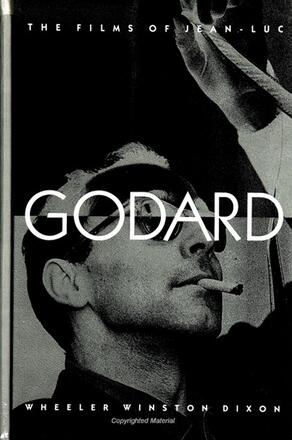
The Films of Jean-Luc Godard
Alternative formats available from:
A generously illustrated overview of, and introduction to, the entirety of Godard's work as a filmmaker and video artist.
Description
One of the most important, controversial, and prolific filmmakers in film history, and a founder of French New Wave cinema, Jean-Luc Godard has maintained an unbroken string of films in various genres and mediums from the late 1950s onward. Godard has established a reputation as a rebel who can work within and outside the system, producing films that are creative, breathtakingly beautiful, and yet commercial enough to earn back their production costs. In this book, Wheeler Winston Dixon offers an overview of all of Godard's work as a filmmaker, including his work for television and his ethnographic work in Africa. Free from the jargon and value judgments that have marred much of what has been written about Godard, this is the only book that covers the entirety of Godard's career, from his early film criticism for Cahiers du Cinema to his most recent video/film work. Illustrated with forty-six rare stills and researched in detail, it is the Godard book for the 1990s.
Wheeler Winston Dixon is Professor of English and Chair of the Film Studies Program at the University of Nebraska, Lincoln. He is the author or editor of ten books, including Re-Viewing British Cinema and It Looks At You: The Returned Gaze of Cinema, both published by SUNY Press, and co-producer and co-director of the hour-long documentary "Women Who Made the Movies" (1991). His films have been screened at The Museum of Modern Art, The Whitney Museum of American Art, The Museum of the Moving Image (London), The Jewish Museum, the San Francisco Cinematheque, and elsewhere.
Reviews
"Dixon has written an excellent book, thoroughly researched and documented and distinguished by insightful commentary and wonderful bagatelles. By performing an anatomy on the corpus of Godardian cinema, Dixon discovers not only that Godard has pronounced the death of cinema in his own films but also that the cinematic genre, medium, and discipline might well be dead. This is a momentous discovery, even though Dixon seems to concede it is polemical. This book could well be a passport to the (dis)information age, of particular value to Generation X. It is also an important commentary on the wider movement of nouvelle vague, in popular culture as well as cinema." — Paul Matthew St. Pierre, Simon Fraser University
"The author has written a lively, accessible book which relates Godard to current problems in film. Dixon has avoided making Godard a museum-piece figure relevant only to the sixties and seventies. He persuasively argues for the relevance of Godard's work to technological developments occurring today in cinema, television, and interactive media. He also draws on critical theory in an enlightening and accessible manner. One of the pleasures of this book is the manner in which it draws on contemporary theory to illuminate aspects of Godard's past and present work in a non-elitist manner." — Tony Williams, author of Hearths of Darkness: The Family in the American Horror Film
"Anyone interested in the history of European film in the last fifty years of the twentieth century needs the kind of comprehensive summing up this book provides. This is a succinct and well-balanced account of a long and distinguished career, with plausible interpretations of Godard as a man, filmmaker, and recorder of our century." — Edward T. Jones, author of Following Directions: A Study of Peter Brook